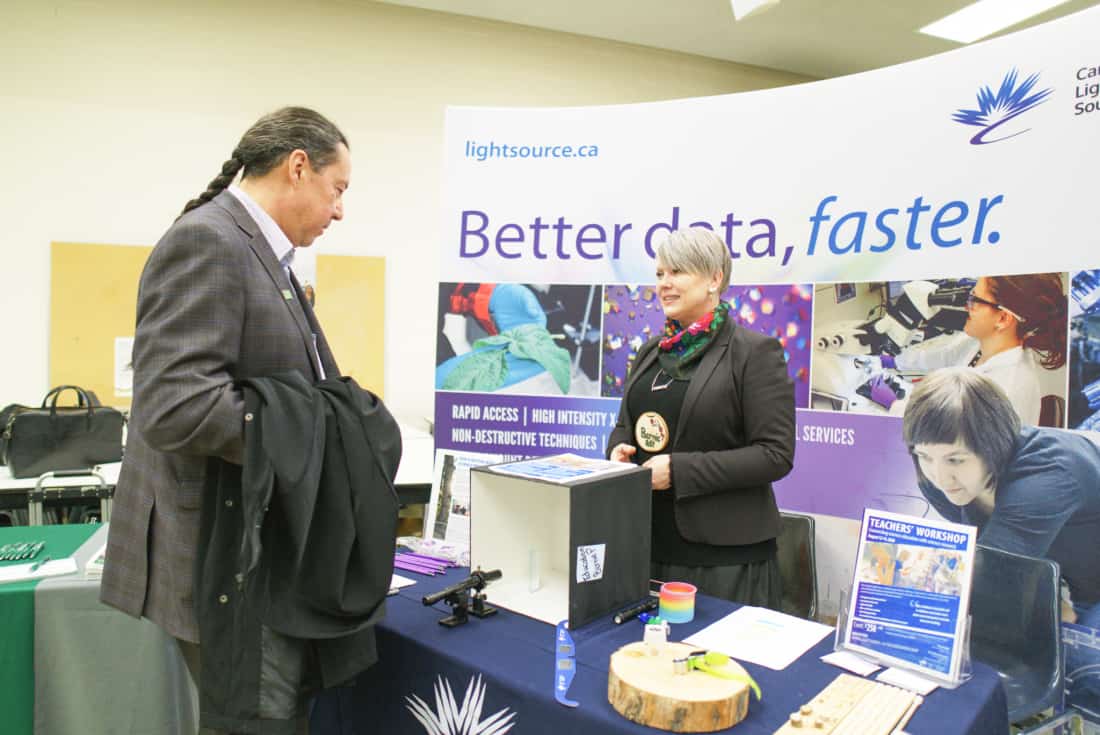
The third annual Canadian Indigenous Science and Engineering Society gathering was an opportunity for Indigenous students in STEM programs to create meaningful relationships with industry professionals and showcase their own research.
The University of Saskatchewan’s .caISES chapter was founded last year by Micheala Merasty and Julia Doucette-Garr, who are currently co-presidents of the student group. The pair had the idea to start the group after attending the 2018 .caISES conference in Calgary.
Merasty says the Saskatoon conference was an amazing experience because of the relationships that it fostered.
“Every time I’ve been to a .caISES conference, you can feel the kinship that is built over a short weekend, and so by the end of this it feels like we’re a family,” Merasty said.
The three-day gathering sold all of its 170 tickets and was the largest Canadian .caISES event yet. This year’s theme focused on how sustainability relates to land, water, energy and engaging Indigenous youth in STEM.
Representation was another concept discussed throughout the conference, and how connecting Indigenous STEM students with professional mentors increases access and equity across the disciplines.
When Merasty began her studies, she felt that as an Indigenous mother, she was the “polar opposite” of who the colonial education system was built for; she thought she would be alone on her journey. Merasty says that experiencing a room filled with Indigenous STEM scholars and professionals at .caISES events can be very encouraging.
“Having these people who work in areas where we don’t have a lot of representation and just being able to see them, it builds that excitement that we are Indigenous and we can do anything we want,” Merasty said.
Throughout the event, educational sessions were held on a range of topics from outreach education initiatives for teaching math and science in First Nation schools to strategies for diversifying the STEM community through traditional Indigenous ways of knowing.
The conference also showcased students’ research. Merasty, who took part in a student panel presenting on health and resiliency, says that when USask .caISES did a call for abstracts, they were able to accept all of the applications.
“We gave them that space to show us their work and it was amazing,” Merasty said.
A number of industry professionals were also in attendance, many of which had over 20 years of experience within mining or other major industries. Many expressed their excitement at seeing the changes being made at a societal level to continue diversifying the STEM community.
As Merasty is near to completing her degree in environmental biology, she is now making sure the .caISES chapter goes on after she graduates. She is focused ratifying the group with the student’s union and making plans for the group’s future.
“We also want to start doing more programming; a lot of [effort] has been focused on getting people to conferences and planning conferences,” Merasty said.
“But now that we’ve jumped over this big accomplishment, we really need to settle down and connect with each other in the ways that we’ve been talking about over this weekend.”
Sandy Bonny, the College of Arts and Science’s team leader for the Indigenous Student Achievement Pathways and STEM Access Initiatives, says that hosting the national conference a year after the creation of the USask .caISES chapter is like “a dream becoming a reality.”
“Saskatchewan has a large Indigenous population and there are a lot of gatherings around culture… Those are a really vital part of Saskatoon’s cultural fabric, but often what we’ve heard students here say is that even when they find those places of belonging they’re often the only STEM person,” Bonny said.
“So this is a really unique forum where people can connect as members of treaty communities but also as STEM professionals. The people here are often minorities in multiple worlds so bringing them together is really powerful.”
—
Noah Callaghan/ Staff Writer
Photo: Riley Deacon